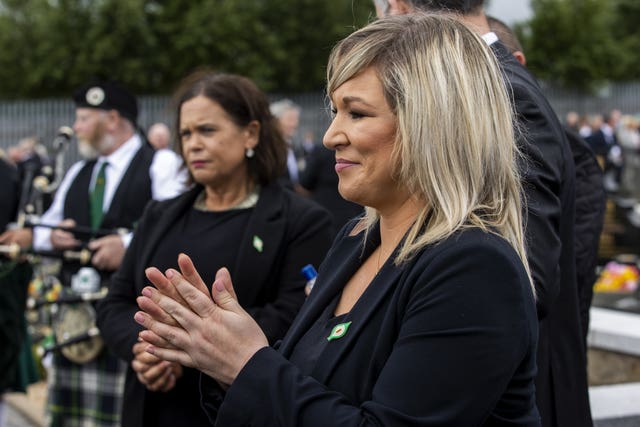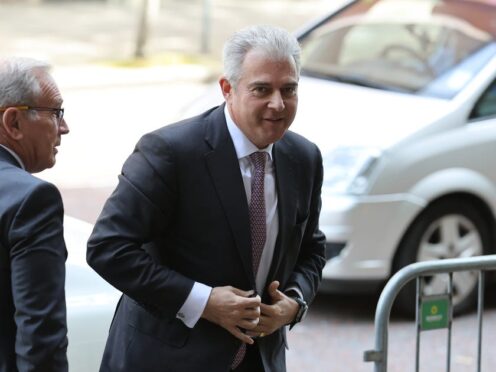Former Northern Ireland secretary Sir Brandon Lewis said he feared the Stormont Executive could collapse in autumn 2020, as tensions rose between ministers about whether to extend Covid restrictions.
Giving evidence to the UK Covid-19 Inquiry, Sir Brandon also said he had been surprised when the Irish Government shut schools in the early months of the pandemic, just a day after he had had a conversation with the country’s deputy premier about the need for consistent messaging across the island.
The Stormont powersharing institutions were restored in January 2020 following a three-year collapse.
But the new Executive found itself immediately faced with the challenge of coping with the Covid pandemic, introducing a series of restrictions to attempt to limit the virus spread.
In November, during a series of Executive meetings, Stormont ministers struggled to agree on extensions to lockdown measures as the second wave of the virus spread.
Sir Brandon, who was secretary of state at the time, said ministers had become frustrated with each other.
He told the inquiry: “I do remember during that period being concerned that I could see the Executive collapsing again.

“One of the ministers had been talking about resigning, just out of frustration at how things were happening.
“It wasn’t about so much the decisions per se, it was about the process, papers coming late or inappropriate, people leaking things during the meeting.
“There was a real frustration with each other. It was a very, very difficult period.”
Sir Brandon said tensions in the Executive had spilled over into the public following the attendance of Sinn Fein members at the funeral of republican Bobby Storey in June 2020.
He also pointed out that Sir David Sterling had retired as head of the Northern Ireland Civil Service in August 2020 but then-first minister Arlene Foster and then-deputy first minister Michelle O’Neill had been unable to agree on a replacement.

The inquiry was also shown a readout from a telephone conversation between Sir Brandon and then-tanaiste Simon Coveney on March 11 2020.
The conversation had focused on the need for consistent messaging between the two jurisdictions in the fight against Covid.
But the following day, the Irish Government announced it was going to close schools.
Lead counsel for the inquiry Clair Dobbin KC asked if this had become a “cause of some difficulty” for ministers in the Stormont powersharing Executive.
Sir Brandon said: “Absolutely right, yes.
“It certainly did cause an issue. Only days before, myself and Simon Coveney were discussing how we work together, keep each other informed, if there are going to be differences, which there are likely to be with two sovereign governments making decisions and the Northern Ireland Executive with their powers, so that we at least understand what they are so we can manage them.
“And then we were all taken by surprise. I was actually in Washington DC when the taoiseach (Irish premier) went out in Washington and made that announcement.
“It was a complete surprise to everybody and that was surprising, bearing in mind we had all just been talking about working together.”
He added: “It immediately put a question mark, if the Irish Government have got a reason to do this, why is not everybody else doing this?
“For the wider UK Government it created an issue, but it was a particular issue in Northern Ireland because of the lack of notice, lack of understanding of why they were doing it.”
